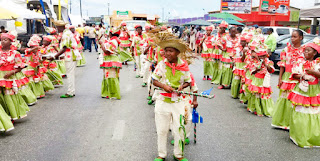Overview of Curaçao
Curaçao, a hidden gem of the Caribbean! With its colorful city and lovely beaches, it has more to offer than just that. This island is known for having a very diverse culture. While the majority of the population may be Afro-Caribbean, the residence also consists of Dutch, French, Latin Americans, and Asians! Once you reach the island, you will be able to tell the official language is Dutch, but Papiamento (Portuguese Creole language) is also spoken here on the island! Do not fret, this information may be shocking, but they also speak English here! Just don't let that stop you from learning a few new words on the way!
 .
.
Due to being colonized by the Dutch, there is a majority of Catholic practices (Roman Catholics) on the island. It may come as a surprise since it is home to the famous Mikve Israel-Emanuel Synagogue, one of the oldest and continually used synagogues in the Western Hemisphere. Although the Jewish population expanded during their arrival in the 1500s, there are now 350 Jews left on the island. It is due to population flight. Many have reportedly left due to attending universities in other countries and have not returned, living a new life somewhere else.
In 1954 Curaçao and other Dutch territories became apart of the Netherland Antilles. It's another way of saying that they were constituent countries of the Kingdom of the Netherlands and that the Netherlands was able to give self-autonomy to their internal affairs. In 1986, one of the countries (Aruba) seceded and separated itself from the Netherland Antilles. Soon after the remaining islands (including Curaçao ) would agree to dissolve themselves from this political entity. It would take Curaçao many years to become an autonomous nation within the Netherlands. After 56 years of being apart of the Netherland Antilles, Curaçao became autonomous in 2010.
Sources Consulted:
“Curaçao.” The Virtual Caribbean Library, ggccaribbean.wpengine.com/listing/curacao/.
“Curaçao - Religion and Expressive Culture.” Countries and Their Cultures, www.everyculture.com/Middle-America-Caribbean/Cura-ao-Religion-and-Expressive-Culture.html.
Scheib, By: Ariel. Curacao Virtual Jewish History Tour, www.jewishvirtuallibrary.org/curacao-virtual-jewish-history-tour.
Harris, David Russell, and Harmannus Hoetink. “Netherlands Antilles.” Encyclopædia Britannica, Encyclopædia Britannica, Inc., 27 Apr. 2020, www.britannica.com/place/Netherlands-Antilles.



Your blog is adorable and looks great!! You can tell you took your time with your post and your entire blog. You chose bright and colorful pictures to catch the eye, and an easy to read font. Great job!
ReplyDelete